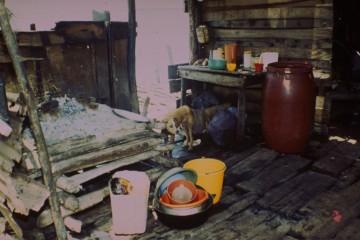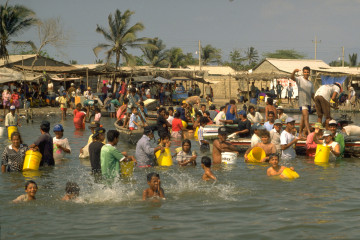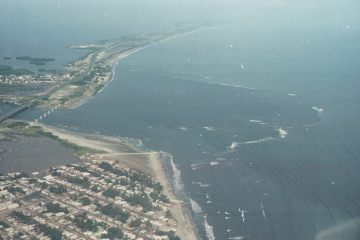https://www.sciencedirect.com/science/article/abs/pii/S0165783698001684
The fresh-water clam Polymesoda solida (Philippi, 1846) is the principal fishery resource in the Ciénaga Poza Verde, Salamanca Island, Colombian Caribbean Sea. Between July 1995 and June 1996, samples were taken to study reproduction, growth, mortality, production and fishery aspects of this population. P. solida is monoecious (hermaphroditic) combined with protogyny. We found an arrhythmic reproductive cycle with several spawning events per year, which could be related to the salinity cycle. The growth parameters of the von Bertalanffy growth equation were: Loo=47.3 mm and K=0.204 yr-1
following mortality rates were estimated: total mortality, Z=0.748, mean natural mortality, M= 0.210 and fishing mortality, F=0.538 yr-1 respectively. P. solida is exploited in an artisanal (small-scale) fishery by approximately 80 fishermen. During the study period, mean daily catch was calculated as 314.4 kg shell free wet weight, and mean effort as 42 fishermen per day. Maximum exploitation rate, corresponding to the maximum relative yield per recruit and calculated with the relative yield per recruit model of Beverton and Holt, was Emax=0.445. The observed exploitation rate (E=0.719), calculated from fishing mortality, F and total mortality, Z, indicates overexploitation. A reduction of the fishing effort therefore is strongly suggested, to achieve a sustainable exploitation. Somatic production of the population (in g AFDW m-2 yr-1 and the productivity (P/B) were 0.647 and 0.230 respectively. P. solida is exploited in an artisanal (small-scale) fishery by approximately 80 fishermen. During the study period, mean daily catch was calculated as 314.4 kg shell free wet weight, and mean effort as 42 fishermen per day. Maximum exploitation rate, corresponding to the maximum relative yield per recruit and calculated with the relative yield per recruit model of Beverton and Holt, was Emax0.445. The observed exploitation rate (E=0.719), calculated from fishing mortality, F and total mortality, Z, indicates overexploitation. A reduction of the fishing effort therefore is strongly suggested, to achieve a sustainable exploitation.




